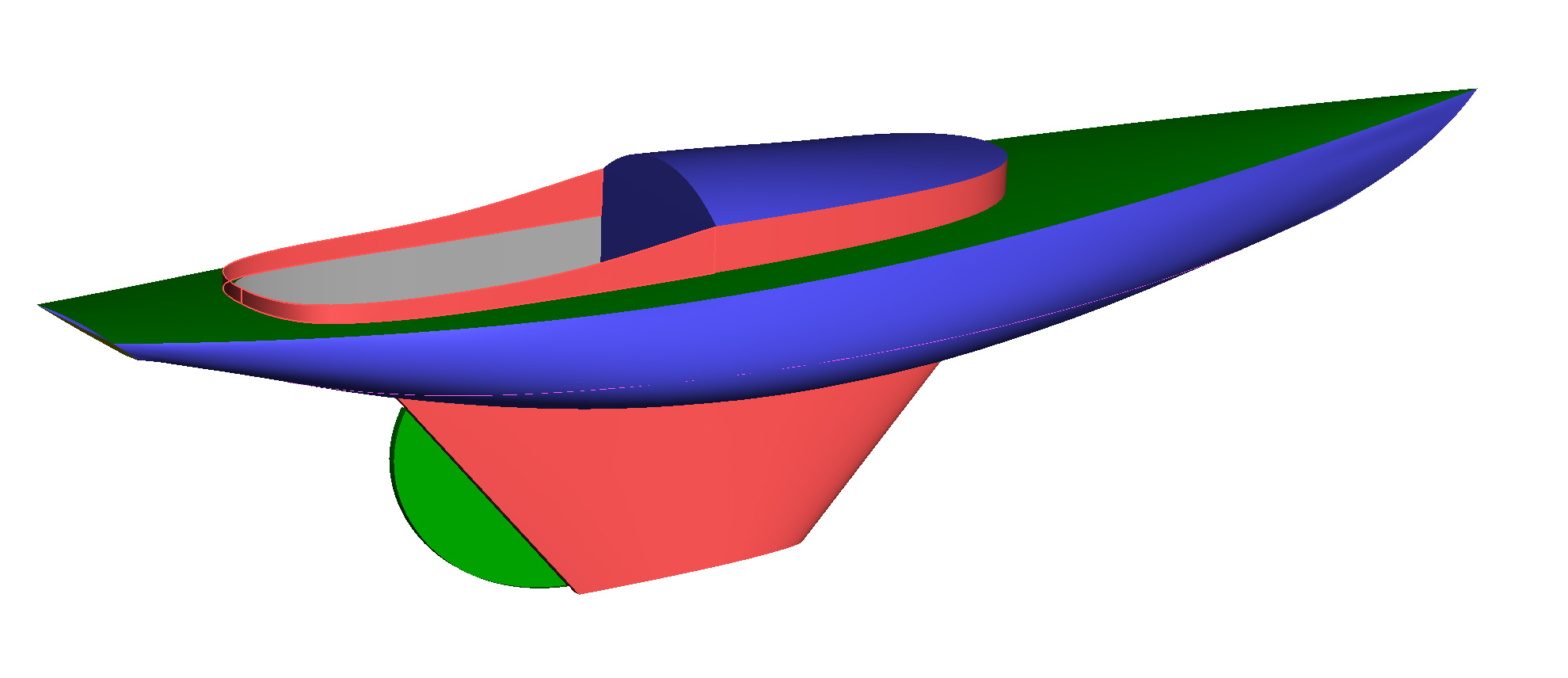Radius Chine Design
(Single Constant Radius)
It is commonly thought that a Radius Chine Design hull is not really a ‘True Round Hull’. That a Radius Chine Design hull only imitates a ‘True Round hull’ because the surface between the freeboard and bottom of the hull is a 'Single Constant Radius' not a freeformed surface.
It is my contention that a ‘Radius Chine’ hull is a ‘True Round’ hull. Here is why!
To be a True Round or Warpped surface the surface must roll in two direction at any given point on that surface.
When a ‘Radius Chine’ hull is on the Designer’s drawing board the hull surface between the developable surfaces is intentionally designed to be a ‘Single Constant Radius’ in Girth which is one direction of roll. The other direction of roll along the length of the hull is achieved by the segment shell plate process of 'Bezier Design and Construction', therefore if a surface curves in two directions by definition it is a ‘Warped’ or ‘True Round’ surface.
The advantage of a 'Radius Chine' design over a 'Bezier Free-formed' design is that the Shell Plate segments are all roll-formed instead of the press-brake forming process used in a free-formed surface.
See - 'Approximate Development'
This Section View of the 'Bezier 28' is a free-formed hull designed by 'Bezier Design and Construction' to add another option to 'Radius Chine' design by replacing the 'Single Constant Radius' of 'Radius Chine' to a Free-formed. In many respects 'Radius Chine' and 'Bezier Chine' are inseparable.
The section drawing below shows the frames of the hull. While the curves between the developable surfaces are free-formed curves, for instruction purposes, I have assigned an approximate radius radius at Frames Three, Seven, and Eleven that would correspond roughly to the free-formed curve.
It can be seen, by the change of radii, that the hull change radius along the length of the hull and in girth, indicating that the hull is indeed a True Round surface.

The following three (3) ‘Radius Chine’ designs are based on the‘Free-formed’ version of the Bezier 28 hull design above.
- The Eight inch (8") radius is about the lowest radius a 'Designer would choose. However, smaller radii are an option.
- The Sixteen inch (16") radius is about the largest that would be chosen, given the width of the transom.
- The Twelve inch (12") radius is shown to reference the middle ground between the upper and lower limits.
- Again, in many respects 'Radius Chine' and 'Bezier Chine' are inseparable. Study the below hull form and speak to the 'Designer'.






All Copyrights Reserved - MetalSailboats.com
2009 - 2023
|
|

|
|
|
|
|
|
|
|
|
|

